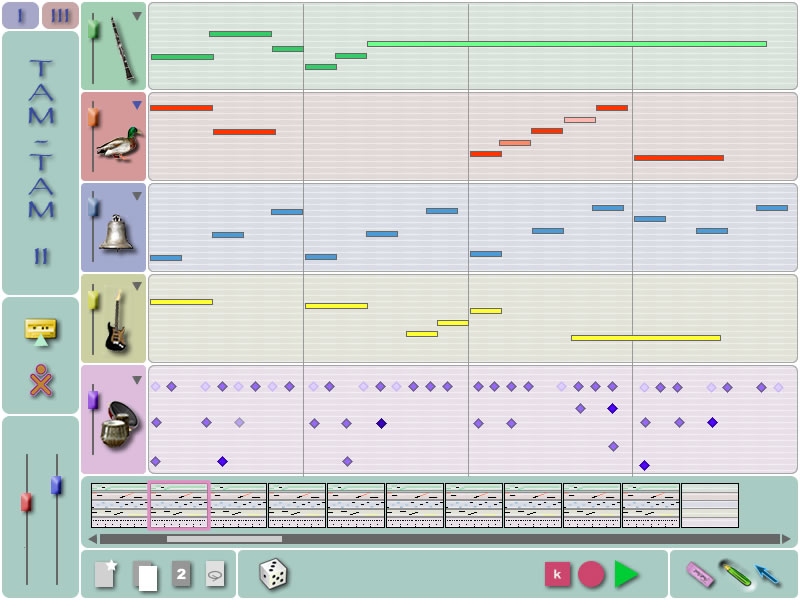TamTam: Difference between revisions
m (re-categorization) |
(→Links) |
||
| Line 72: | Line 72: | ||
== Links == |
== Links == |
||
Translation of this page in [[TamTam_%28tocando_m%C3%BAsica_no_micro%29|Portuguese.]] |
Translation of this page in [[TamTam_%28tocando_m%C3%BAsica_no_micro%29|Portuguese.]] |
||
External link to TamTam blog site [[http://tamtam4olpc.wordpress.com/ http://tamtam4olpc.wordpress.com/]]. |
|||
External link to a video of miniTamTam in action [[http://www.youtube.com/watch?v=31L9qaxOrp0 http://www.youtube.com/watch?v=31L9qaxOrp0]] |
|||
[[Category:TamTam]] |
[[Category:TamTam]] |
||
Revision as of 09:45, 12 January 2007
A music and sound exploration application for the OLPC
Preliminary page. This is a condensation of the talk given at OLPC in Boston on June 14th 2006.
First a picture of the interface:
The latest screenshot of the upcoming TamTam
Goals
- Provide children with a culturally-informed environment for making music and sound on the OLPC;
- Provide an audio/music experience that is instantly rewarding for a musically naïve user;
- Provide a pathway to more sophisticated musical experiences;
- Provide a playable musical instrument with its own “sound”;
- Provide a dynamically adaptable learning environment that proposes simplicity and welcomes complexity;
- Use mesh networking to encourage collaborative music making;
- Introduce notions of audio and music programming.
TamTam uses CSound as its audio engine
People
- Jean Piché
- Douglas Eck
- Olivier Bélanger
- Sean Wood
- James Bergstra
- Nathanaël Lécaudé
- Adrian Martin
- Eric Lamothe
TamTam is an educational application
Music is often described as the purest form of mathematical representation, driven instinctively by the human mind. It connects between people in many ways, and offers ways for expressing non-verbal emotion. In that sense music is related to problem-solving and communication.
On a more practical level, TamTam helps explore and explain ideas connected with sequences, fractions, repetition, transposition, and representation, all of which are helpful for an intuitive understanding of mathematics and many aspects of scientific enquiry. In the realm of applied physics, TamTam proposes tools to explore the phenomenon of sound and show how the manipulation of physical quantities have a direct effect on what is heard. A child's first physics lab starts with making sounds.
Sounds
This section provides information on the sound bank that will be used in TamTam. In addition to the sound bank, users will be able to record short samples using the internal microphone of the OLPC computer.
Development
IRC
We have a channel called #tam_tam on the Freenode network.
Links
Translation of this page in Portuguese.
External link to TamTam blog site [http://tamtam4olpc.wordpress.com/]. External link to a video of miniTamTam in action [http://www.youtube.com/watch?v=31L9qaxOrp0]
